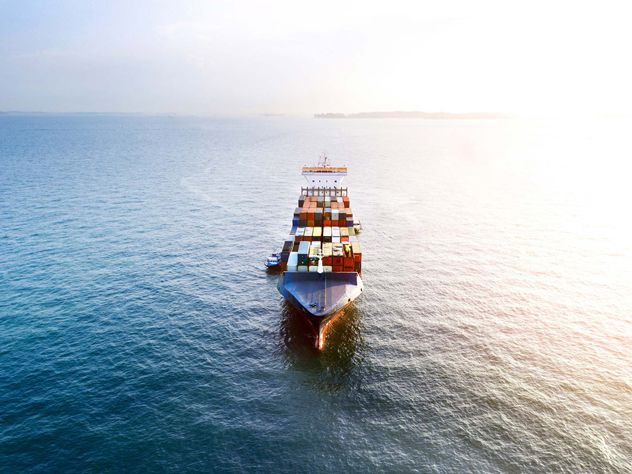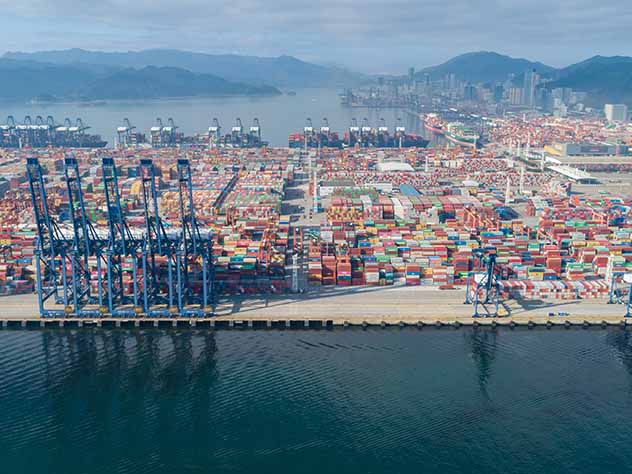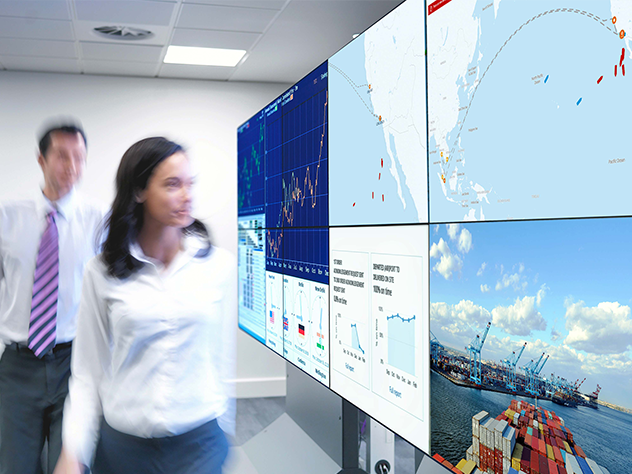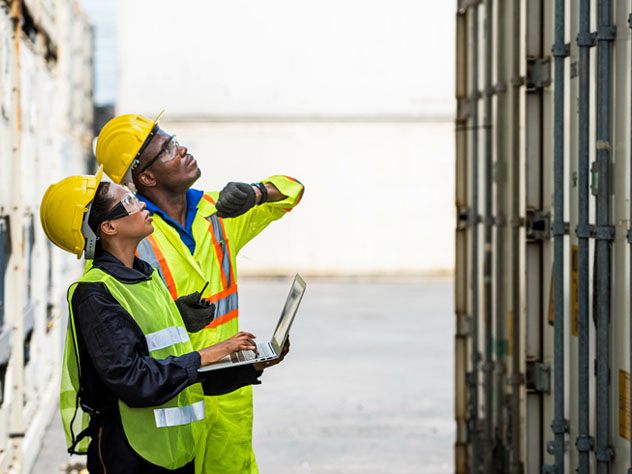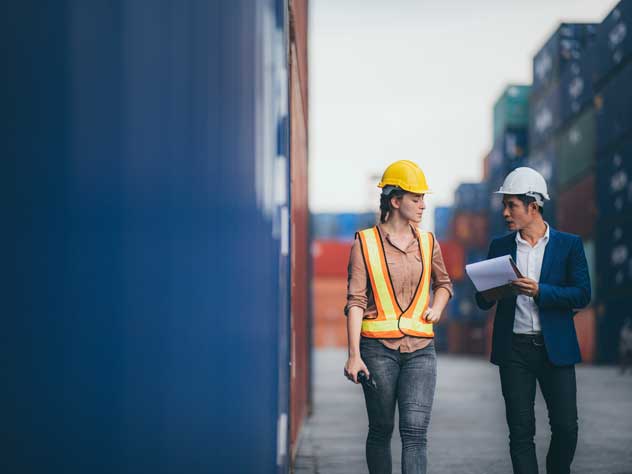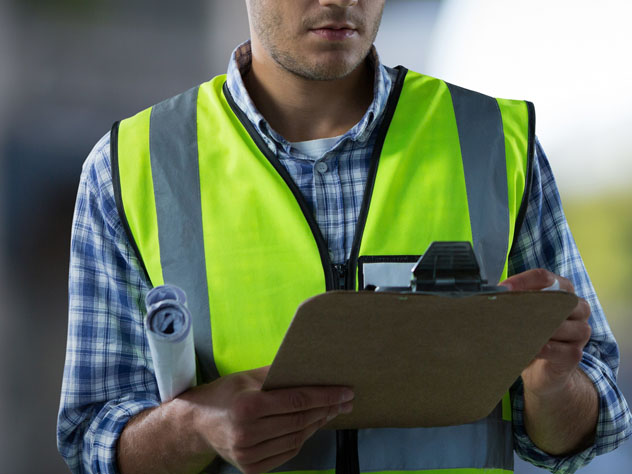At Kuehne+Nagel, sustainability in shipping is a topic we take seriously. While container shipping is already the most environmentally-friendly method of transporting goods globally, the complete decarbonisation of the logistics industry is still 10 to 15 years away. Until new climate-friendly fuels or propulsion systems become available on a larger scale, our innovative approach to sustainability in shipping lets you opt for more environmentally-aware transport options.
Understanding your carbon footprint
Recent developments in big data and predictive analysis enable us to accurately measure transport carbon emissions. This allows us to offer you full visibility of your shipping-related emissions through our carbon calculator and the seaexplorer platform, so that you can choose the eco-friendliest services.
In order to reduce carbon emissions, we are offering a sustainable biofuel solution in close cooperation with carriers and suppliers. We are also working closely with the Global Maritime Forum’s Getting to Zero Coalition to accelerate the development of zero-emission ships by 2030.
Sustainable logistics: Carbon-neutral sea freight solutions
We currently offer three completely climate-neutral sea freight solutions – less than container load (LCL), FCL Pledge and eShipAsia. We offset the entire carbon footprint of these services by contributing to environmental projects. We work with nature-based projects around the world that help to reduce greenhouse gas emissions, while also preserving biodiversity and improving the livelihoods of local communities. We have partnered with various NGOs to create this viable path towards carbon neutrality. These projects are based on the UN’s Sustainable Development Goals (also known as SDG goals) and are verified by independent organisations with the highest internationally recognised standards. By supporting these projects, we generate carbon credits which can compensate the CO2-emissions of a shipment.
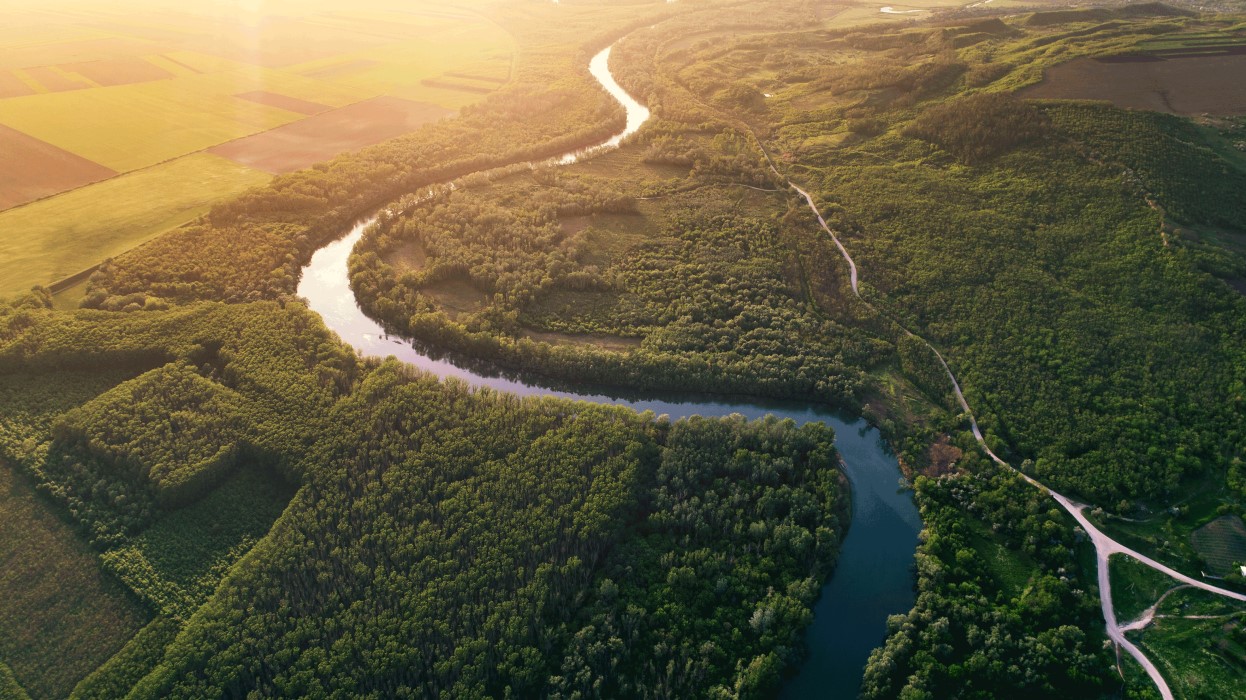
Leadership in green logistics
We are working closely with all carriers to promote sustainability shipping. To achieve this, we have created ‘green lanes’ which give priority access to vessels that have lower emissions. We are also undertaking other initiatives, which include:
- Reduce the movement of empty containers
- Identify shipments which can be switched from truck to ship (barge) transportation
- Use containers with sustainable floors (such as bamboo)
- Prevent the transportation of undeclared hazardous goods, or the shipment of illegal toxic waste
Learn more about our zero carbon business model and about offsetting and the nature-based projects that we invest in.
Join us. These customers are already proud to carry out CO2-neutral transports with us.


